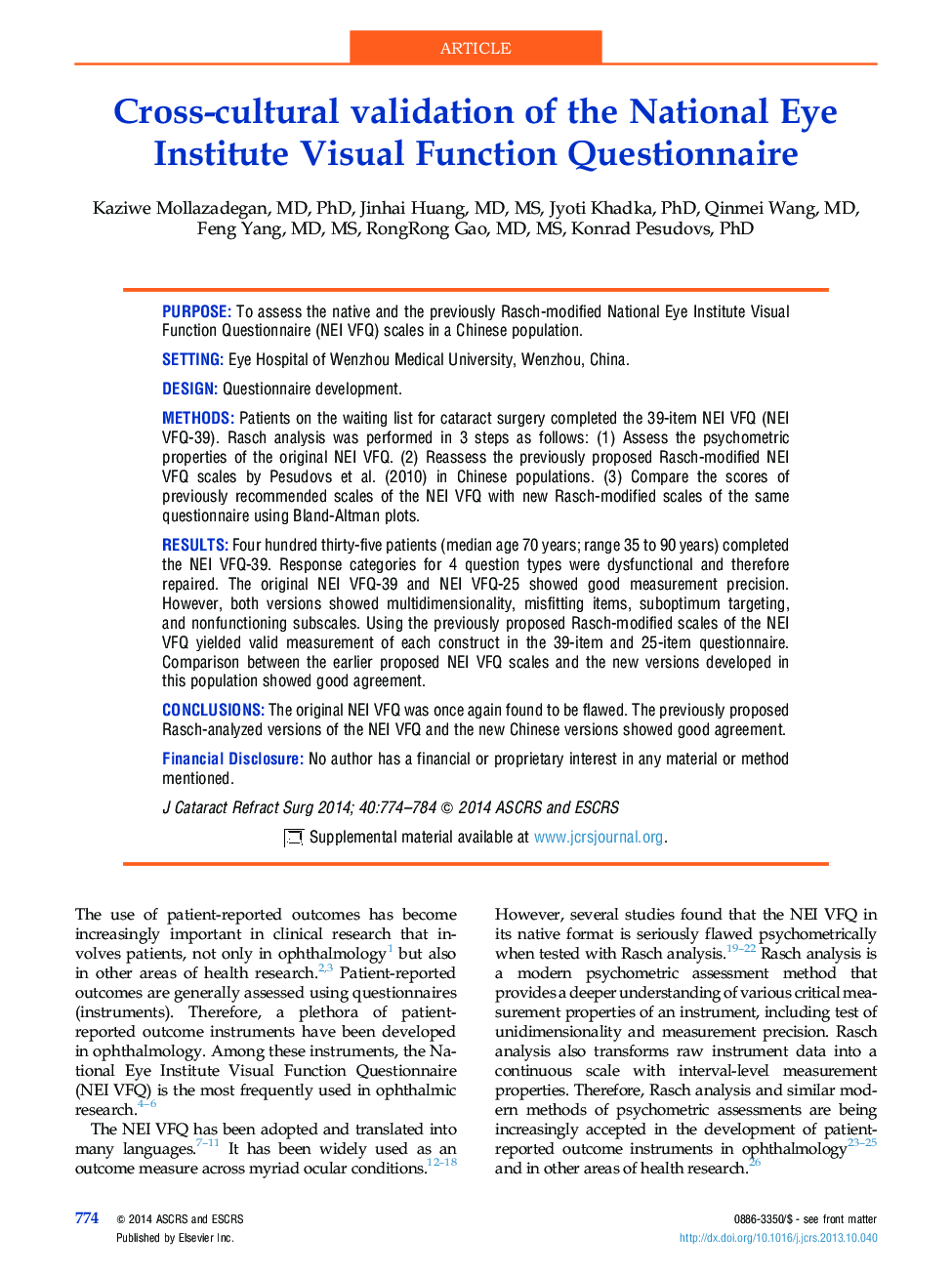| Article ID | Journal | Published Year | Pages | File Type |
|---|---|---|---|---|
| 4017117 | Journal of Cataract & Refractive Surgery | 2014 | 11 Pages |
PurposeTo assess the native and the previously Rasch-modified National Eye Institute Visual Function Questionnaire (NEI VFQ) scales in a Chinese population.SettingEye Hospital of Wenzhou Medical University, Wenzhou, China.DesignQuestionnaire development.MethodsPatients on the waiting list for cataract surgery completed the 39-item NEI VFQ (NEI VFQ-39). Rasch analysis was performed in 3 steps as follows: (1) Assess the psychometric properties of the original NEI VFQ. (2) Reassess the previously proposed Rasch-modified NEI VFQ scales by Pesudovs et al. (2010) in Chinese populations. (3) Compare the scores of previously recommended scales of the NEI VFQ with new Rasch-modified scales of the same questionnaire using Bland-Altman plots.ResultsFour hundred thirty-five patients (median age 70 years; range 35 to 90 years) completed the NEI VFQ-39. Response categories for 4 question types were dysfunctional and therefore repaired. The original NEI VFQ-39 and NEI VFQ-25 showed good measurement precision. However, both versions showed multidimensionality, misfitting items, suboptimum targeting, and nonfunctioning subscales. Using the previously proposed Rasch-modified scales of the NEI VFQ yielded valid measurement of each construct in the 39-item and 25-item questionnaire. Comparison between the earlier proposed NEI VFQ scales and the new versions developed in this population showed good agreement.ConclusionsThe original NEI VFQ was once again found to be flawed. The previously proposed Rasch-analyzed versions of the NEI VFQ and the new Chinese versions showed good agreement.Financial DisclosureNo author has a financial or proprietary interest in any material or method mentioned.
